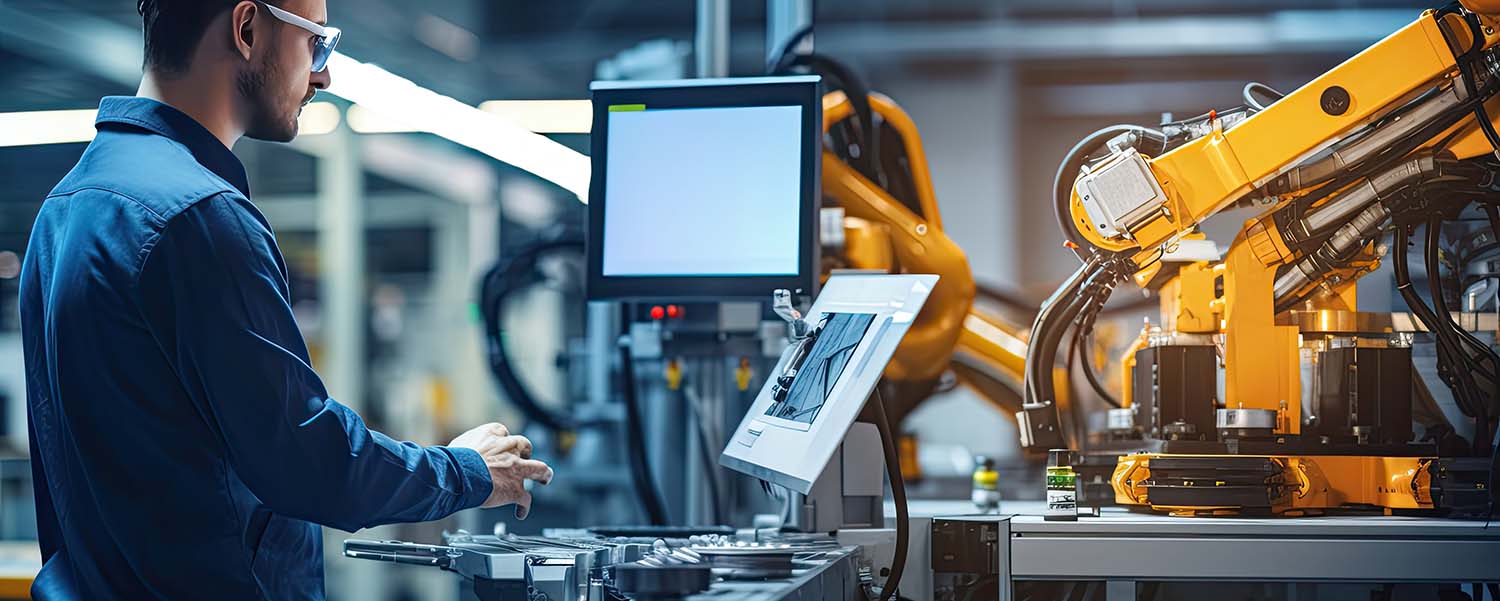Four Success Factors to Human-Robot Collaboration

The “Great Resignation” phenomena and the underlying demographics will not change anytime soon, making it even more difficult to maintain a reliable and trained distribution facility operations workforce.
Steady demand growth, labor shortages, supply chain congestion, and rising costs are testing distribution facility capabilities. Distribution-focused operations are now furiously seeking to automate more and more of their distribution workflow operations and reduce the transaction costs of labor and time that are associated with them.
Everyone is hastily looking to bridge this worker shortage. Surely automation will have a key role, probably through the use of autonomous mobile robots (AMRs)—the most significant advancement in distribution warehouse operations in a long while. This is not so much as a means to reduce employee numbers, but rather to leave much of the repetitive tasks and traveling to warehouse robotics.
Robotics are evolving faster than ever, expanding the role of automation in key warehouse processes. And I see, more and more often, that they are expanding to smaller companies. It’s like what happened when they were driven by e-commerce. Website technology became “democratized” to the extent that websites of the “smaller guys” look a lot like the websites of the “bigger guys.” Now we are seeing affordable “goods-to-person” or “robots-to-goods” technologies now within reach of smaller to mid-sized companies.
Because AMRs now offer even more flexible options for boosting the productivity and accuracy of current warehouse associates, they economize a worker’s time, but can also cut costs, incentivize employees, and even improve health and safety protocols. In addition, “robotics-as-a service” options, rather than up-front capital expenditures, provide an opportunity to minimize capital expenses that are typically encountered in the implementation of new technology.
The four success factors described in this article represent a compelling argument for, and a commonsense approach, to this technology’s successful adoption. So, let’s examine some of the success factors which, I believe, make perfect sense to consider in this new world of ours. Ultimately, I believe they will become the success factors for human-robot collaboration.
1. Reinventing your workflows
Well-planned workflow execution requires more than just integration with existing warehouse, inventory, and order management systems. It involves planning, logic, and the smarts to automate the sequence and allocation of work for processes such as picking, receiving, put-away, bin replenishment, and other warehouse transactions, for instance, returns or other value-added processing requirements.
Yes, we need to integrate the AMR capability with the “slotting” methods employed, with high-velocity pick zones, utilizing batch, zone, and wave picking methodologies that encourage “goods-to-person” workflows that eliminate workers having to walk everywhere. For example, imagine a warehouse employee in receiving having to “dead-head” or put-away product into storage locations. They typically end up walking or driving a forklift back to the receiving area—empty!
2. The distribution of labor
Getting the division of labor right between humans and robots is critical to achieving the efficiencies needed that will make the robotics return-on-investment calculation. In other words, having the economics of it all actually work out.
Labor—mainly picking—typically accounts for 60% to 70% of operating costs in warehouses and distribution centers (DCs), while travel time throughout the facilities can eat up 20% to 40% of a typical work shift. So, getting the division of labor right in that environment, robots—those AMRs—which can carry large loads and travel long distances without tiring, present an opportunity to add value.
Add to that the newest innovations, where, for instance, you can build pallets of product and utilize the AMRs (some of which can carry up to 3,000 lbs.) to transport those pallets to a final destination, inbound or outbound, reducing the travel time of a warehouse associate, thereby optimizing the picking process and/or put-away process, along with optimizing a warehouse associate’s time. AMRs can handle:
- Bulk material movement.
- Components shuttling.
- Piece, carton, and pallet picking, receiving, and put-away; reducing or eliminating fixed infrastructure such as conveyors.
- Bulky, or otherwise awkward products—non-conveyable products.
- Sortation routines.
- Offsetting the potential risks if a portion of the workforce is out sick. AMRs encourage social distancing.
Also, one other major attribute here that we shouldn’t dismiss has to do with extending the life of older warehouses, increasing their throughput, revitalizing and enabling newer, more efficient approaches to warehouse workflows, with minimum disruption.
So, the major “distribution of labor” impact of these changes, which now can become a reality, is going about deploying both the AMRs and warehouse associates to work collaboratively with one another.
But first remember, the job of the AMR is to optimize order processing priority, the sequence of processing, and the system directed path each AMR will take through the warehouse or DC, in response to open order fulfillment requirements.
So, it’s wise to look at any scenario where things are moving. That’s an opportunity for an AMR. It isn’t about replacing the labor force, as much as it’s about increasing the productivity of the process.
That major change factor then becomes one of allowing warehouse associates to “cluster” in zones or at specific “workstations” —and focus on the work required, the real value-added activities; like the judgment and dexterity needed to pick, sort, consolidate, and pack orders. Again, this involves both inbound and outbound transactions, whatever the activities.
Now, despite what I happen to think is the conceptual simplicity that AMRs offer, introducing them into the warehouse/DC requires a thorough internal review of your operations.
Yes, there needs to be thoughtful planning, and it will most likely require some changes to warehouse configuration and processes. Somehow, I find that what may often initially be perceived as a long-payback period or anticipated reconfiguration difficulties—these get in the way and will sometimes cause initial hesitation. But being on the right side of that, is that AMRs have opened up entirely new “use cases” that can be found and applied to traditional distribution and warehouse operations.
So, ultimately, the question becomes: What’s the business case? What’s the return on investment (ROI) potential, the bottom line, particularly as it relates to affordability versus that very important factor of “the value of time?” So, I suggest you think of AMRs as “productivity multipliers.”
3. Attracting workers and retaining them
The difficulties in finding enough warehouse labor may make at least some use of robotics a foregone conclusion for many operations. For some, it could be a fairly rapid return on investment.
Because—despite higher wages, signing bonuses, and other incentives—job seekers (notably younger workers) aren’t biting as we might expect. Older workers—for their own and sometimes obvious reasons—shun such work. In this tight labor market, there may be other alternatives for them that they view as preferential.
Shifts are long—up to 10 hours. Pay is structured around a base salary and maybe some incentives. Injuries from repetitive reaching, lifting, and handling are a natural concern. Keep in mind that a typical picker walks eight or more miles each shift. Much of that is unnecessary travel – such as those “dead-head” moves I described earlier. That’s a fact. Common safety risks range from repetitive stress injuries to equipment- related accidents.
Now, a tech-centered warehouse or DC creates an entirely different and more attractive work environment. Many employment candidates have already experienced a more tech-savvy environment and have acquired the requisite skills to interact with technology. So, as we alluded to earlier, AMRs can be “swarmed” to bring order instructions to warehouse associates who reside in designated zones, and use batch, zone, and/or wave-picking strategies to fulfill orders. The resulting travel reduction helps warehouse associates meet performance and incentive targets, while mitigating injuries, sick days—and very importantly—burnout.
Therefore, AMRs can not only bring a plus to warehouse functions, but also to hiring outcomes, because today’s warehouse associates, I’ve observed, want a chance to work with new technologies, and more often than not, are attuned and receptive to other emerging technologies as they come along.
Consequently, from an employer’s perspective, this raises a whole new set of considerations about the ease of onboarding new employees, their training, their space configuration, and, of course, distribution operations cost impacts.
4. The financial implications and the flexibility to pilot and then expand
Of course, there is an intuitive case for warehouse automation—very similar to what you probably experienced when you first considered a WMS (warehouse system).
You have to be able to build-out a solid business case—things like input and output, how work will be divided among people and machines, the relative time and cost for each shift, potential overtime savings, how travel time affects service offerings and delivery commitments. In other words, how it all nets out in terms of ROI and the effectiveness of capabilities.
The first step is to understand where and how your distribution operation best stands to benefit, understanding is essentially qualifying your operation.
Given the current business uncertainty about COVID-19 (for instance, is it really over or not?), inflation, and your market’s economic growth, senior management may be rightfully wary. Facilities capacity may be tight, and we know that labor, as we’ve been saying, is in short supply. And how much of your customer’s demand has simply been pulled forward due to product scarcity?
Thus, options like “robotics-as-a service” (or RaaS, a subscription-based way of procurement) are now particularly attractive as they offer flexibility in strategy course corrections, that is to scale back or advance investment, as better clarity is reached. RaaS provides scalability flexibility and a more incremental solution to help respond to expected business surges like seasonality, unexpected events—like COVID-19, supply chain problems, and resultant buying surges.
Senior managers, I know, recognize the opportunity cost of doing nothing as labor shortages and inflation potentially erodes margins. That’s why some companies are choosing to begin by testing or piloting basic robotics services, maybe in specific and segregated warehouse areas, then adding AMR units for other warehouse areas and functions as needed, as confidence grows, and demand dictates. It’s like a “trying the solution on for size” approach.
This is where you will be looking to your robotics service provider or outside consultants for support and guidance for a longer-term robotics strategy, flexibility of scale, the timing of deploying AMRs, minimizing installation disruption and/or configuration constraints, and optimizing human capital.
So, yes, it does take a bit of courage to break new ground. You can start simple—but just start! Unleash, upgrade, and unfurl your company’s key competitive advantages—in ways that are fast, have force, and are financially prudent.

















